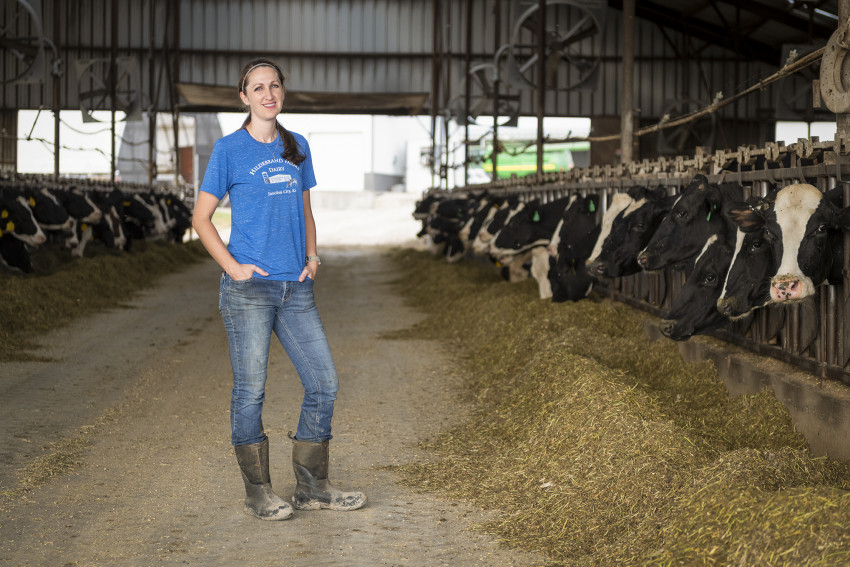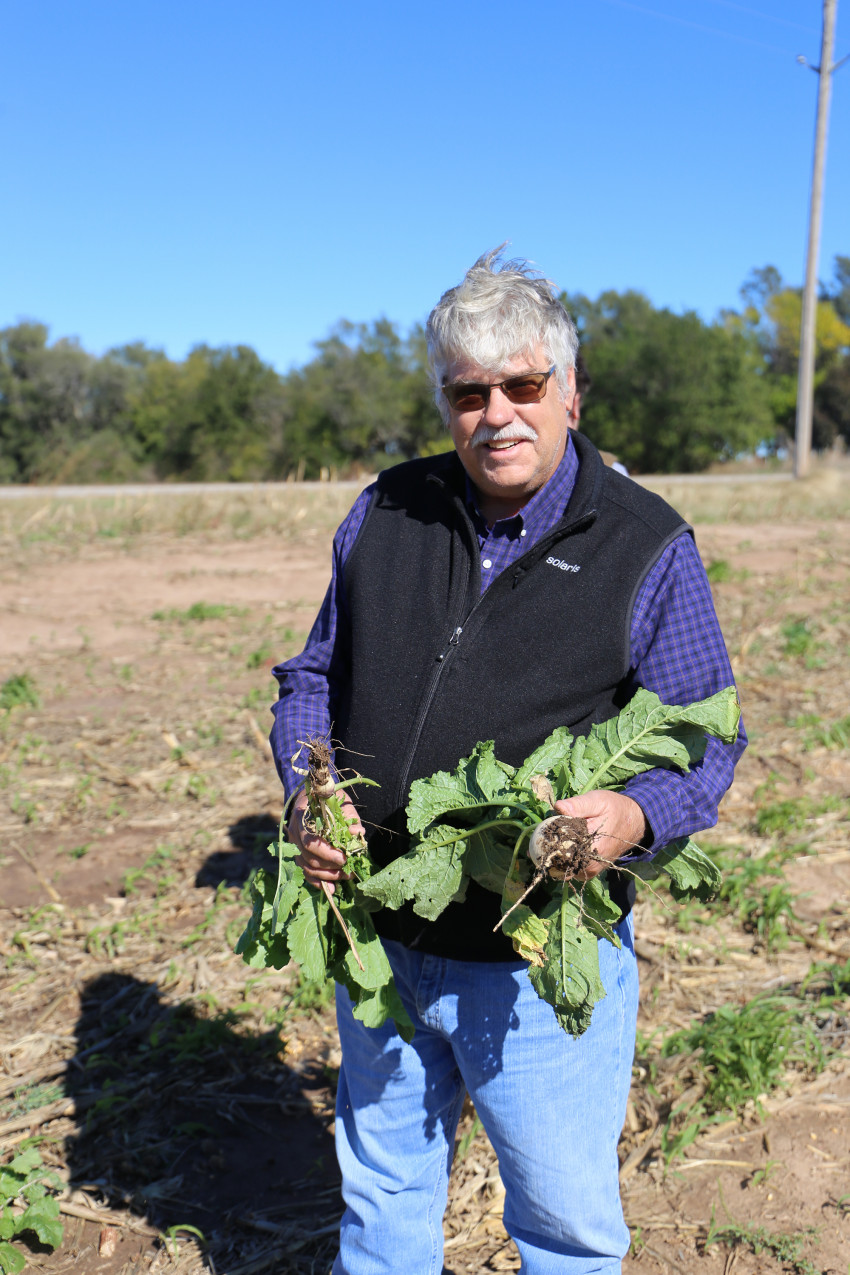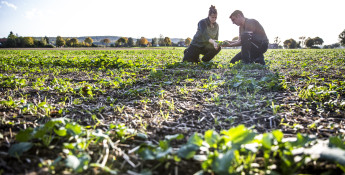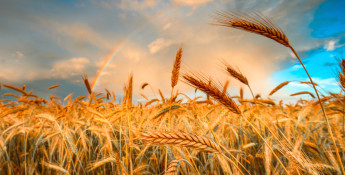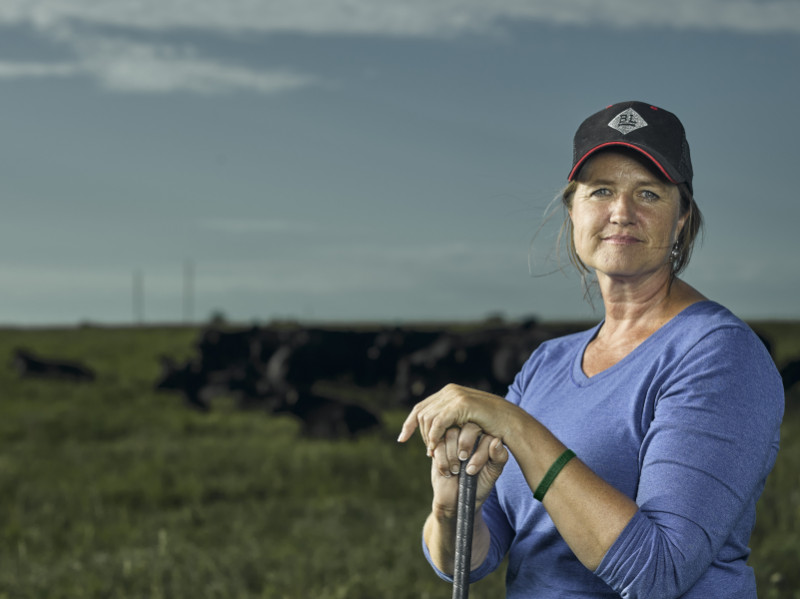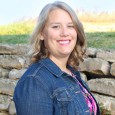By Meagan Cramer on May 13, 2022
Sustainability is Important to Kansas Farmers
Sustainable agriculture ensures these farms continue for years to come
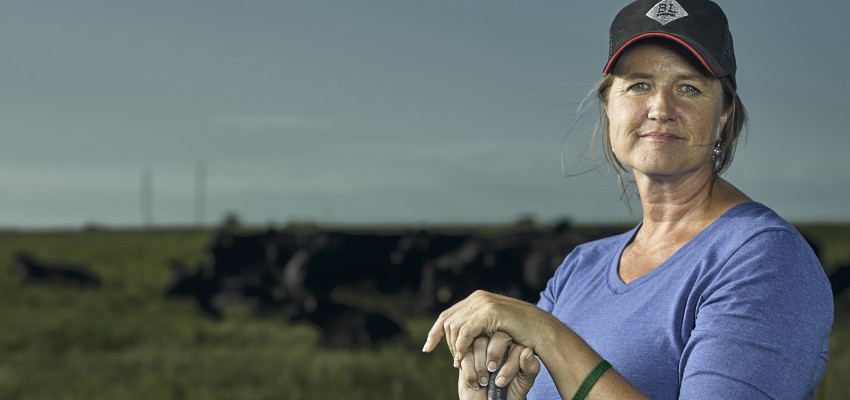
Sustainability is a buzz word we often hear when we’re talking about food and farming. What does it mean to you? If you asked your neighbor or coworker, would they define it differently?
We asked a handful of Kansas farmers and ranchers to share what sustainability looks like on their farms. Not surprisingly, each had a varying definition, but when you drill down to the basics, each one plans to leave everything in better shape so future generations can carry on the farming and ranching tradition.
SUSTAINABLE BEEF
Debbie Lyons-Blythe and her husband, Duane, raised five kids on their Flint Hills ranch — the same ranch that was homesteaded by Duane’s great-great-grandfather in 1890. When you ask Debbie to define sustainability, she shares it’s always at the forefront of their minds.
“Farmers and ranchers have always been focused on sustainability,” she says. “But we may not have called it that. We may have said heritage or legacy or simply doing a better job with what we have, but it all comes back to sustainability.”
She explains there are three pillars they focus on: the environment, social issues like caring for livestock and people, and economics. The economics of a farm and ranch are often overlooked in conversations about the sustainability of today’s food system, but Debbie shares this is an important piece of the puzzle.
“If I don’t make money on my ranch, then I don’t have money to put back into the environment or people,” she says. “It’s fundamental for a business.”
Cattle play an interesting role in the overall sustainability landscape. Not all land is great at growing food suitable for humans. The Flint Hills, where Debbie and Duane ranch, are full of rock. Underneath the soil you’ll find chert and limestone, which means it can’t be tilled so crops like wheat and corn aren’t grown there. Instead, grass grows, and this grass is high-quality feed for cattle. Debbie’s cattle can eat this grass and upcycle it to a nutritious (and delicious) source of protein we can digest. For that reason, they’re sometimes called nature’s great recyclers or “superheroes,” as Debbie prefers.
These superheroes also help with carbon sequestration.
“If we did not have cows grazing this area, it would grow up into a scrubby forest, and the trees that would grow here do not sequester carbon,” she says.
The roots of the grasses that grow in the Flint Hills reach into the soil (sometimes up to 20 feet) and help put carbon back in the ground. Those root systems also help rain infiltrate the soil.
SUSTAINABLE DAIRY PRODUCTION
In 1930 Arnold Hildebrand and his wife, Rose, started a small hobby farm in Junction City. Today, there are four generations of Hildebrands who have continued the legacy started by Arnold and Rose, and the farm has an on-site bottling plant, which bottles the seven varieties of Hildebrand Farms Dairy milk available in more than 120 stores throughout Kansas.
Melissa Hildebrand-Reed shares her role as the operations manager at Hildebrand Farms Dairy means she’s continually thinking about sustainability and for her, the health of the cows (whom she calls her girls) and the land is at the forefront.
“For my girls and our future, everything is dependent upon the land,” she says. “For us, that means we have to give back what we take. We have to take care of the water, the soil and every piece that surrounds that.”
They’re able to collect manure from the cows and spread it on their fields to provide nutrients back to the soil. Doing this adds organic material and recycles the manure. They also carefully watch their water usage. For example, in the summer it’s crucial to keep the cows cool and they use sprinklers to achieve this. To conserve water, they added sensors, so the sprinklers are only active when a cow is underneath them.
For their family, using technology and innovation has been a key to their success. In 2008, after two years of studying and planning, an on-site bottling plant opened on the farm. The ability to process their milk on the farm means the farm can support many families and potential generations to come. Hildebrand-Reed smiles and says, “If they so wish. They would never be forced to stay on the farm.”
GROWING SUSTAINABLE CROPS IN KANSAS
On Ray Flickner’s farm in McPherson County, technology and research help the fifth-generation farmer leave the natural resources like soil, water, trees and wildlife in better condition for the next generation. He and his wife, Susan, collaborate with more than a dozen university, industry and agency partnerships on their 147-year-old farm where they grow irrigated corn, soybeans, sorghum and wheat.
For the past four decades, Flickner has used minimum and conservation tillage. That means he tills the ground as little as possible. This keeps the soil from blowing away in the wind or being swept away by the rain. It also means there’s more biological activity (worms, bugs, fungi, bacteria, etc.) and the soil can hold more water.
When talking about water, he shares they’re in an area where there’s a declining aquifer, so they looked for different ways to practice water conservation.
Twenty years ago, they moved from flood irrigation (where a field is essentially flooded with water) to using subsurface drip irrigation. In subsurface drip irrigation, lines are buried beneath the surface of the soil and small amounts of water are placed directly on the roots of crops. This change alone has resulted in an average of 40 percent less water use over the past decade compared to the county average.
Ray is also experimenting with cover crops, studying how those can impact soil health, reduce erosion, improve water quality and help with weed suppression. Cover crops are plants seeded into fields with the primary purpose of improving the soil. Examples of cover crops are alfalfa, mustard, red clover and rye grasses.
Ray knows sustainability is a journey and says, “One of my goals is to leave the place in a better situation than when I took it over. I’m not belittling my forefathers, but today we have different technology. Things are different now. Can we move the needle so it’s profitable and sustainable?”
No matter how you define sustainability, all the pieces must work together. For Debbie Lyons-Blythe, it’s simple to explain.
“If we can take care of the land, take care of the animals, take care of the people and make money, I will be able to pass on my ranch to my kids and grandkids. That’s sustainability.”
YOU MAY ALSO ENJOY:

